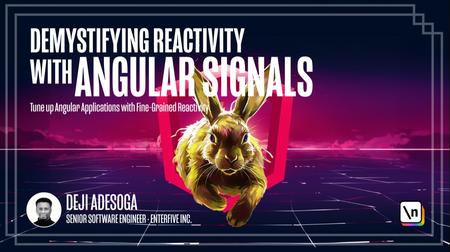
English | MP4 | AVC 1920×1080 | AAC 44KHz 2ch | 16 Lessons (1h 44m) | 475 MB
Learn how to surgically manage state and optimize UI rendering with Angular Signals. This course introduces students to the world of Angular Signals, from reactive primitives to seamless interoperability between observables and signals. By the end of this course, you’ll have learned how to build a highly performant, lightweight Angular application that features deferrable views, lazy loaded routes, and a PayPal-powered checkout flow. Additionally, you’ll have learned the techniques needed to modernize older Angular applications so that they’re able to fully leverage the power of Angular Signals.
WHAT YOU WILL LEARN
- How to manage state in an Angular application by making use of Signals
- The importance of using Signals to enhance change detection
- How to integrate a robust lazy loading approach, by making use of deferrable views and lazy loaded routes
- Difference between using RxJS and Signals when working with data and asynchronous operations
- How to structure an Angular application using Standalone components
- How to work with the newly built-in control flows
Table of Contents
1 Course Introduction
2 Project Architecture
3 The Concept of Signals
4 The importance of Signals over Change Detection and Zone.js
5 How to Create a Signal
6 Reactive Primitives in Signals
7 Module 3 Introduction
8 Fetching Data from the Server using RxJS
9 Using the Interoperability API to convert Http requests to Signals
10 Module 4 Introduction
11 Adding Items to the Shopping Cart
12 Integrate Counter Functionality and Remove Items from Cart
13 Implement the Checkout Page
14 Exercise
15 Error Handling in Signals
16 Wrapping up the Course
Resolve the captcha to access the links!